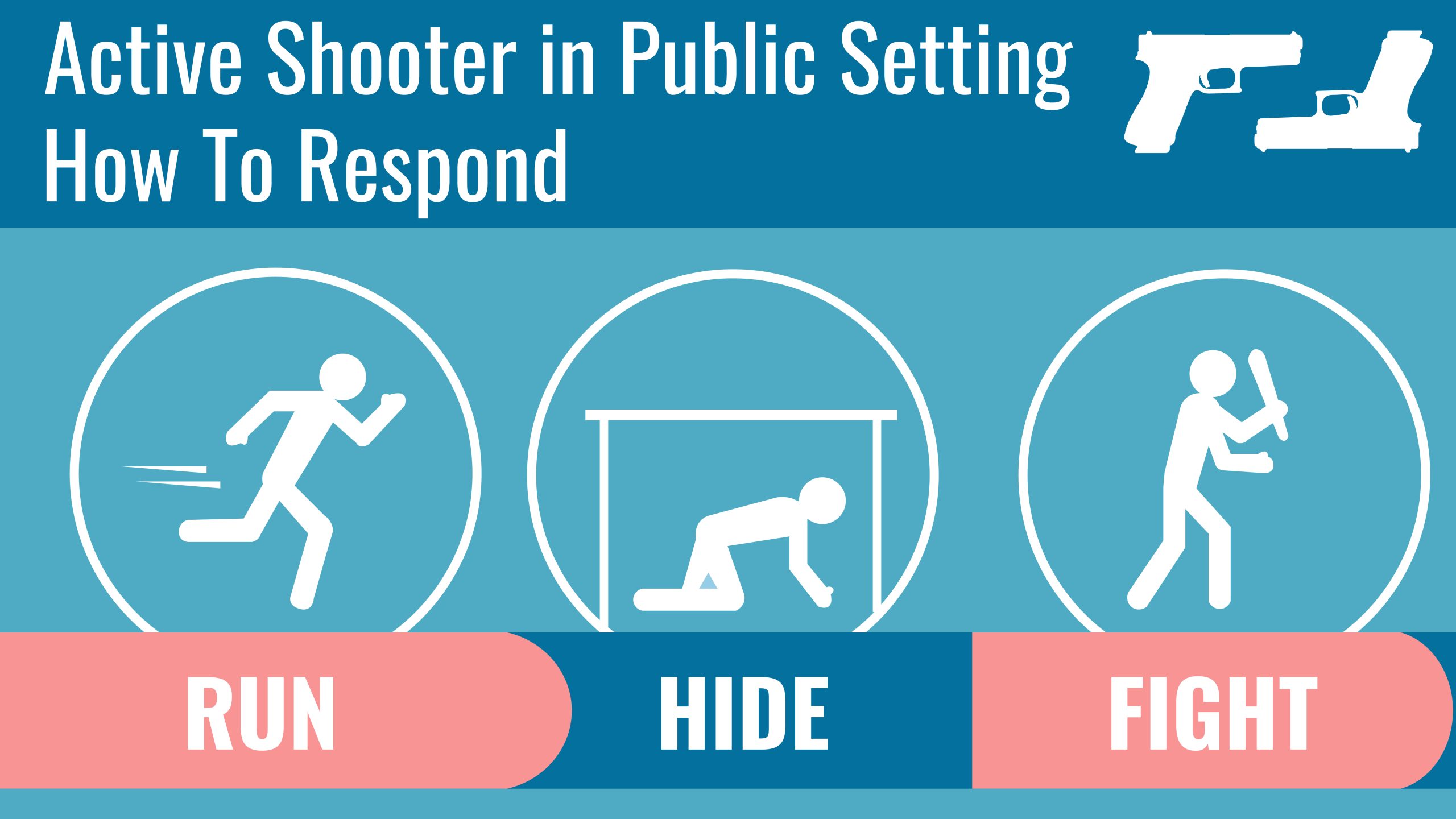
Being present in a social setting does exaggerate our senses to another extent. Our observational and acting instincts get extra active to act out for particular situations. Sometimes, in familiar places, we find ourselves in a comfortable shell where we expect that any mishappening wouldn’t take place. Yet on rare occasions, while being off guard, we or somebody we know encounter a certain situation of discrepancy which would affect the peace of some particular spot. These incidents are usually disturbing and tend to leave a long-lasting impact on people.
Infamous incidents like Mumbai Terror Attack (2008) are an example of an uncertain event that creates a sense of fear and discomfort among prevailing citizens. The scale, severance, and exposure of such incidents affect people’s perspectives. Recently, Texas Elementary School Shooting was a horrifying incident that created a sense of fear, discomfort, and insecurity among natives. A gun-held man killed nineteen children and 2 teachers, and the motive isn’t clear yet. This incident has been labeled as active shooting as the predator has been engaged in intentionally harming the targeted population.
What is an Active Shooter Event?
An active shooter event is defined as an incident where a predator or a group of predators armed with a firearm or weapons try to harm the public with their disruptive behavior. Such behavior is violent. Certain events act as a threat to the prevailing population of any targeted area.
This phenomenon develops a sense of fear and discontent among people. Such situations are escalated quickly and are unpredictable. Immediate deployment of law enforcement is necessary for certain situations to have a hold over the situation. The cases of active shootings have been rising rapidly over the years. Certain shooter cases escalate spontaneously, yet most of them are pre-planned.
Who gets affected by this phenomenon?
Active shooter incidents don’t have any targeted audience in particular. Who gets affected by an active shooter incident depends upon a factor that revolves around the perspective or predator, i.e., the shooter? The shooter would target a particular confined area in which they’d act out to scare or kill pertaining targets.
What is a common motive of an active shooter? An active shooter tries to reflect the feeling of discontent and disagreement towards anybody or target people with such a violent approach. Criminal intent could be one of the major reasons which lead to active shooter incidents. Customer-patient conflict, worker-to-worker, domestic violence, and ideological violence are the other major potential reason. Usually, the victims who’ve been a part of an active shooter incident or even a bystander are the people who would get affected by the phenomenon of active shooting.
Aftereffects of Active Shooter Event on Predator and Victims
The consequences differ for both parties, i.e., the predator and the victims. After being exposed to an active shooter event, a person must deal with a variant set of consequences. The degree of exposure to events on a person decides the intensity they get affected by certain events. According to a report published in 2015, between the span of 2000-2003, nearly 160 active shooting incidents took place in America. And after 2015, the number of cases hasn’t lowered by any chance.
Talking about a predator’s perspective, who triggers the whole situation to harm or kill somebody from the targeted population. Predators usually commit active shootings to reflect their sense of discontent or disagreement against certain people or something. Nearly 40% of active shooter incidents ended with shooters committing suicide. The factor of committing suicide emphasizes a predator’s face mentally and emotionally and leads up to such a stir. Their actions couldn’t predict the entanglement of a person’s mind. Certain mental pressure or burden escalates a person to commit such aggressive actions. The main motive behind prominent actions is to reflect resentment against somebody or their action or some authority.
Talking about a victim’s perspective, they are usually the scapegoats who are chosen anonymously or sometimes targeted with a motive to harm them. Sometimes these victims are active or passively related to the predator executing active shooting. For example, suppose an innocent citizen witnesses an active shooting from a close distance. Then there are possible chances of that witness having a long-term impact on such events. Psychological aftereffects include amnesia, anxiety, and depression. It could also considerably trigger the prevailing trauma of a person.
Federal Outlook on Active Shooter
When an active shooter event takes place, local and state law enforcement are the primary bodies that arrive at the scene of an incident. These local and state law enforcement bodies are guided and regulated by the FBI. FBI is a regulatory functioning body that intervenes in active shooting events from a higher pedestal. FBI acts as an operational body providing behavioral threat assessments and threat management services to detect, intervene or prevent the act of violence. FBI also practices extensive research to identify the indicators that could signal potential violent intent.
Investigative Assistance for Violent Crimes Act of 2012 is a federal suggested act comprised of regulations for violent crimes like active shooting. Appropriate state or local law enforcement request allows the US Attorney General to provide federal assistance during active shooter incidents. FBI works in association with the Department of Homeland Security, Department of Justice, Department of Education, and Department of Health and Human Services. These authorities work cooperatively to suggest preventive techniques to tackle the situation of active shooting.
How to Respond while being in an Active Shooter Threat Circumstance
Acting out in an active shooter situation depends upon the place and distance. Certain situations are unpredictable, which could lead us to act impulsively. The rush and hustle of that certain moment are quite spontaneous. The rule “run, hide or fight” is a widely accepted active shooter response technique. Such a rule emphasizes bystanders or victims acting out in one of the suggested ways to cope with the situation. This kind of situation is risky, and to survive such situations, one has to stay mindful and make calculated decisions.
Run reflects on a response that suggests escaping the target’s territory as soon as possible without getting traced by an active shooter. Under such a phenomenon, an actor in the situation has to look out for possible exits and should be able to assist more people. The hide is a second resort response to an active shooter event. While in a situation, look out for spots where the shooter wouldn’t be able to see you. Hideout is a resort that would save you from being the major target of the active shooter. And lastly, fight, which is the last resort response to an active shooter event. Under circumstances when the shooter seems to be having less damage occurring weapons, then by adjoining efforts, a bystander can pin down the active shooter efficiently. Such a take could be risky, also. By looking into the severity of the situation, one can assess whether one should fight the shooter or not.
Active Shooter at Workplace Setting
A report estimated that 46% of active shooter incidents took place in the area of commerce, which majorly includes workplace settings. Active shooters targeting workplace setups are usually employees on the same page with the organization due to some conflict. Or, sometimes, a stranger could be the shooter. Primarily, ex-employees or employees filled with a sense of discontent with the organization or colleagues could lead to a certain situation.
Above mentioned response “run, hide or fight” could be adapted in case of an active shooter incident at the workplace. Therefore, the human resources department of any particular firm should educate and provide training to their employees to deal with active shooter situations. Active Shooter Preparedness and Response training is an effective course that would elaborate on the possible dimensions of the active shooter situation.
Active Shooter in Educational Institution Setting
Texas Elementary School Shooting is a recent case highlighting the problematic safety drawbacks at educational institutions. It is pretty rare and indecipherable to trace back the reason behind such killings. Several students got killed, and several got wounded for life, as they had to live with a memory of such a horrific incident. Schools located in federal states are known for their developed pact of recommending training and drills for students. However, 24% of active shooter situations take place in schools. Sometimes the predator is a student or some anonymous predator reflecting hate through their violent actions. This horrific incident has raised the need for active shooter training at schools. The basic response rules apply to every place, yet a slight variance exists in the execution pattern. To conclude what has been mentioned above, active shooter events have been a prevailing horror that could take place spontaneously. The federal government rigidly doesn’t have separate sets of laws for such a situation, but working on the existing set of laws and regulations is a need for an hour.




